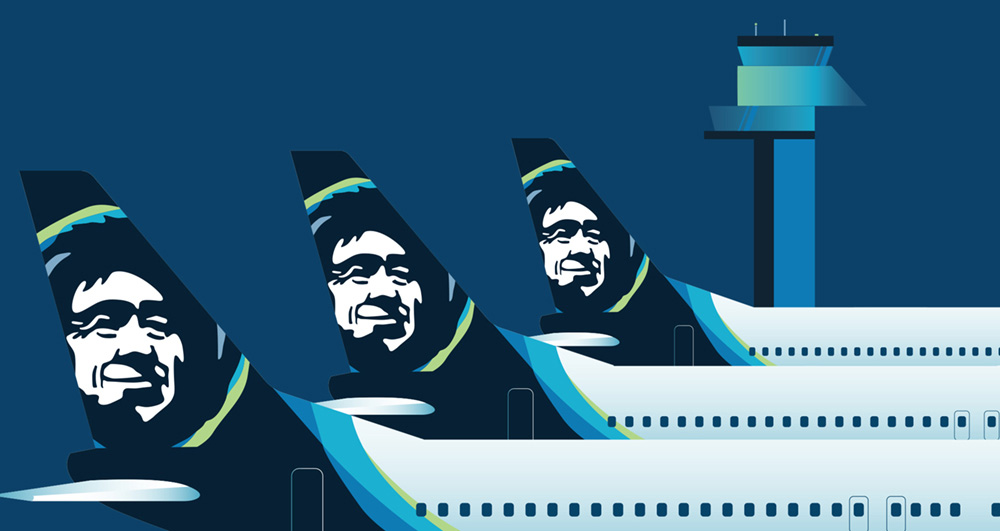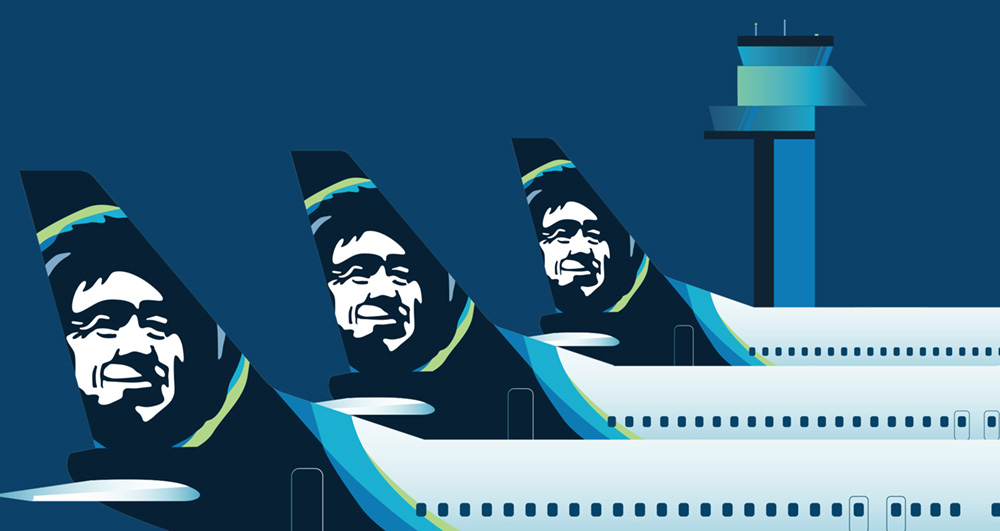What’s an ATC delay? Here’s what can cause them – and what Alaska Airlines is doing behind the scenes
Share

Illustration of Alaska Airlines planes lined up at the gates.
Few things are as frustrating as sitting on an airplane waiting out an “ATC delay.”
ATC is airline-speak for Air Traffic Control, a program governed by the Federal Aviation Administration. It manages the flow of planes as they arrive and depart airports. ATC’s top priority: safety. That includes maintaining a safe amount of separation between aircraft.
In perfect conditions, planes can fly closer together. When airport conditions deteriorate – wind, snow, poor visibility, or even too many flights scheduled in the same time period – controllers ensure the highest levels of safety by requiring more space between planes as they arrive or depart. Instead of 60 airplanes arriving every hour, for instance, ATC might restrict the flow to 30 airplanes. Of course, that slower rate creates a backlog.
Airplanes must wait their turn in the air, at the departure gate or on the taxiway. Other times, airlines cancel flights to help minimize the snowball effect of delays, and passengers are rebooked on the next available flight.
What causes ATC delays?
When you’re waiting for your flight on a bluebird day, it can be hard to believe that weather is the biggest culprit, causing nearly 80 percent of all delays. And it’s not always the weather at the airport you’re departing – it’s usually the weather along your route or at your destination. Some delays are seasonal (like snow and thunderstorms), while others are unusual. Poor visibility from wildfire smoke, for instance, repeatedly delayed flights in the Pacific Northwest and California this past summer.
In a more common scenario, San Francisco’s visibility-impairing fog regularly complicates schedules.
Air travel has seen huge growth over the past decade, and it has been difficult for airports to meet demand for more runways and gates.
“We’re taking a proactive approach to manage air traffic on a day-to-day basis,” says Todd Sproul, Alaska’s vice president of system operations.
What’s Alaska doing about it?
Air Traffic Control is an ongoing process. Multiple times each day, Alaska’s ATC chief dispatchers communicate with the FAA in Virginia about what’s happening in the sky. Alaska’s Flight Operations ATC team not only listens to the FAA, they also propose changes to the FAA’s requirements to minimize the impact of delay programs.
Alaska recently hired Steven Osterdahl as director of air traffic and air space operations. He brings 33 years of FAA experience.
“Alaska Airlines is investing time, energy and resources to operate as efficiently as possible, but we’re also working with the FAA with an eye toward the future to mitigate additional delays as air traffic continues to grow,” Osterdahl said.
Working with pilots, the ATC tower and the FAA, Alaska’s team has made more efficient use of Seattle’s runways, which has decreased the number of departure and arrival delays.
Longer term, Alaska’s Air Traffic, Dispatch and Systems Operations teams are continually seeking creative solutions to address delays, regardless of cause. The team studies weather patterns, rush-hour travel times and seasons, airport configurations – any number of variables, in search of ways to schedule the most reliable flight times possible.
How to minimize the impact of a delay
- Get the Alaska Airlines app. The app pushes the latest information about your flight directly to your mobile device.
- Check your flight status before you go to the airport.
- Sign up for flight updates via email or phone: www.alaskaair.com/flightnotifications
